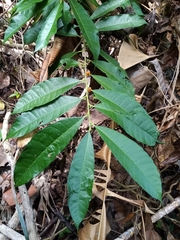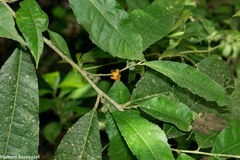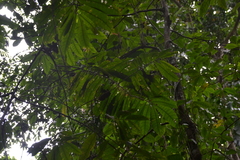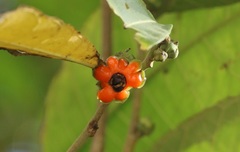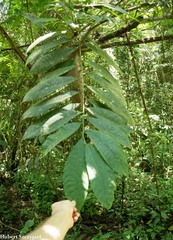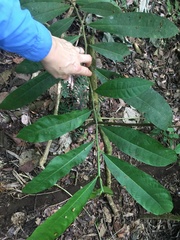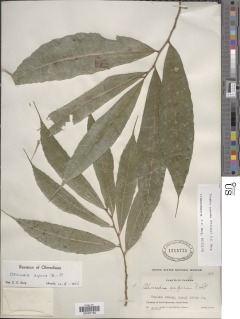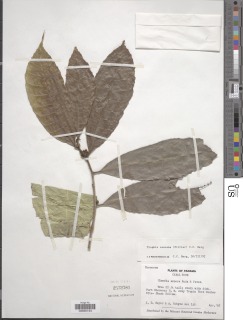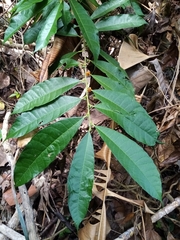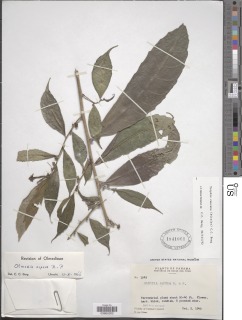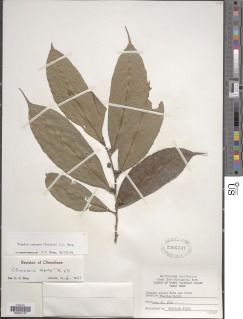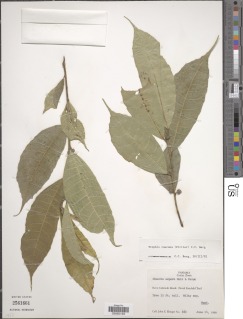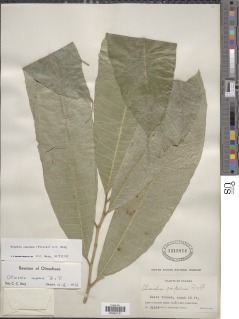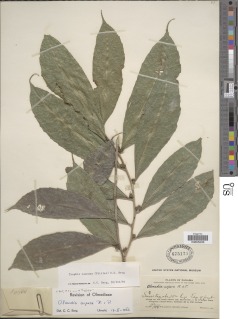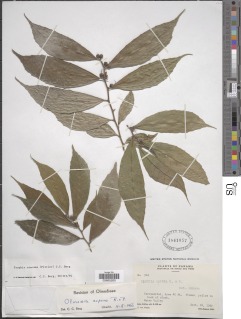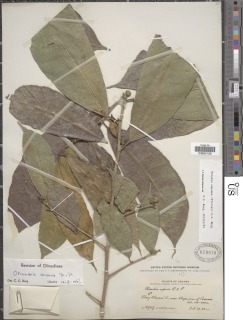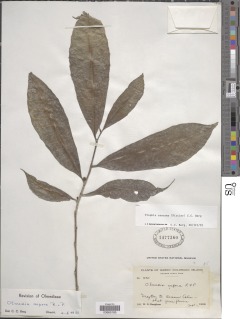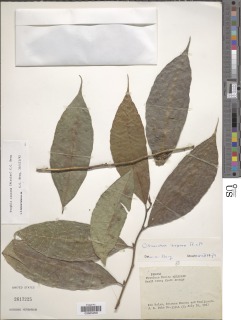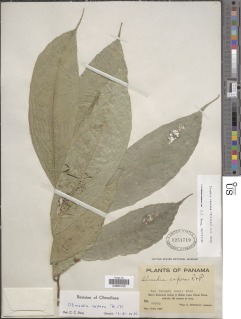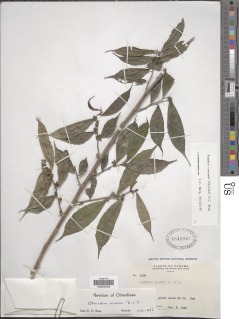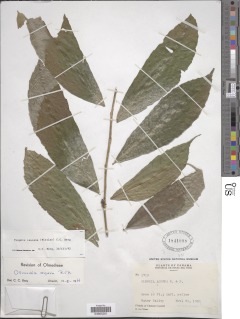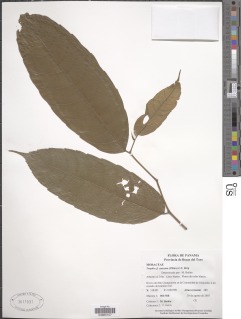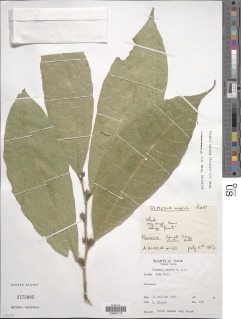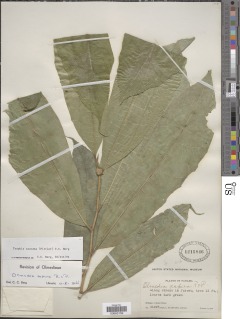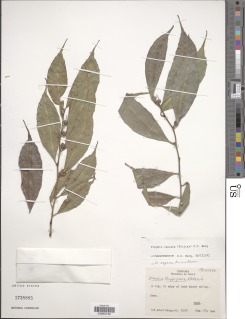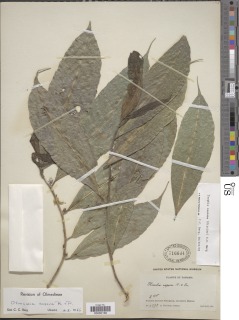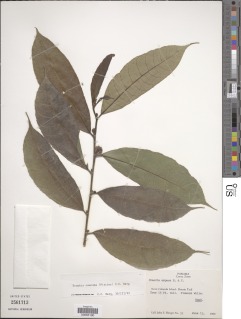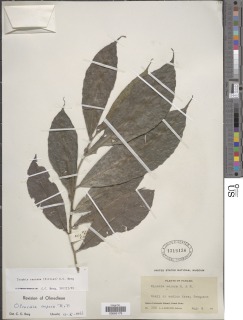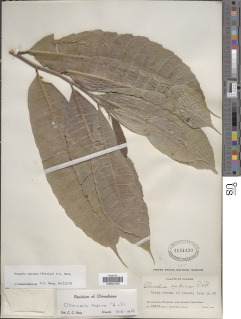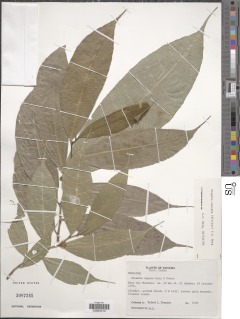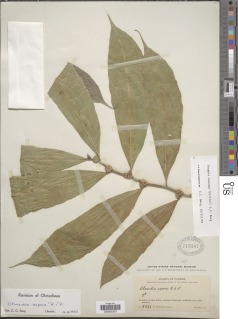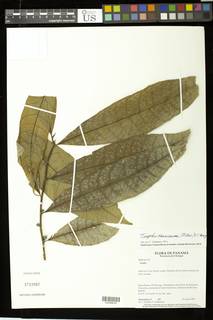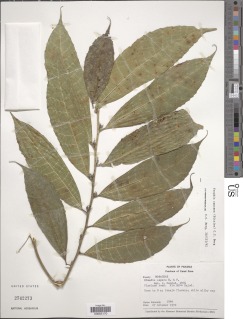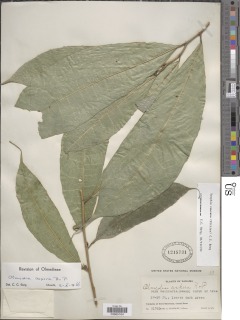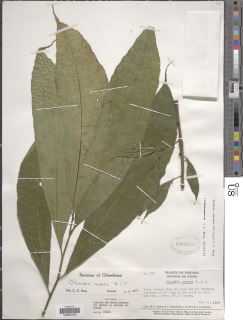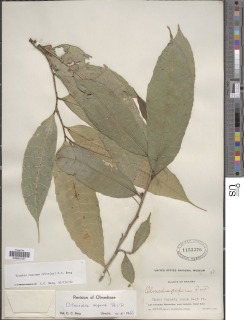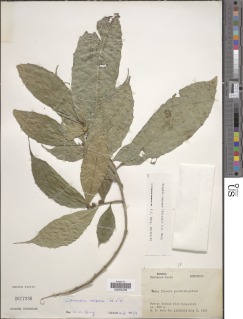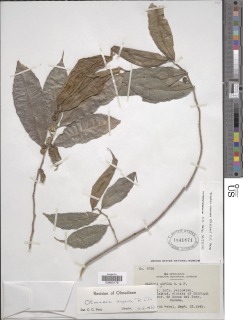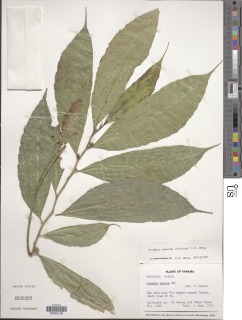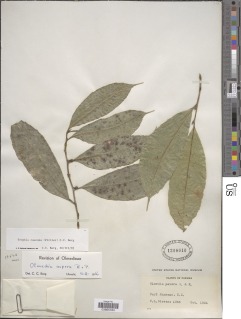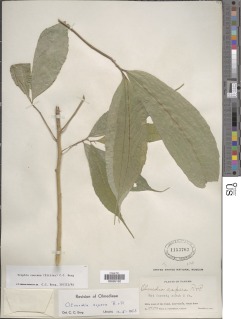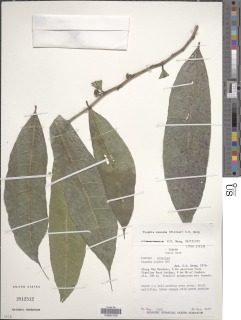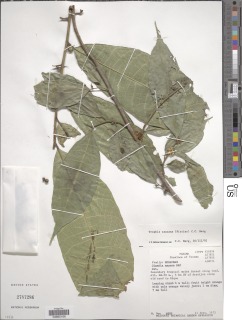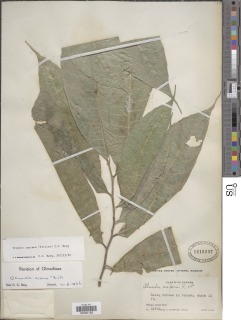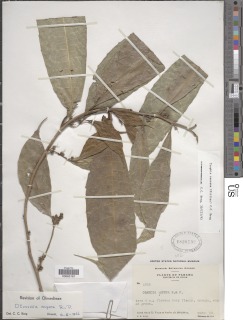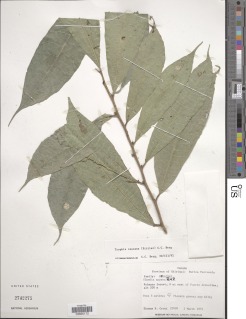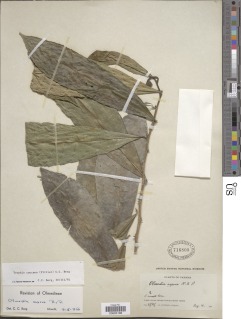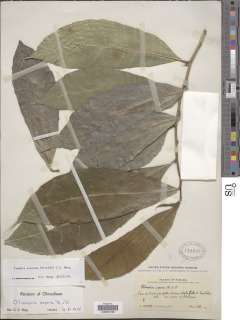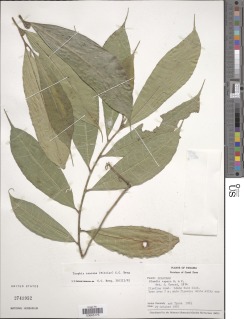

|
|
|
|
Family: Moraceae
lija, more...nervio de toro
[Olmedia aspera Ruiz & Pav.] |
Description: A medium-sized tree, often branched near the ground and with a leaning trunk. The bark is cream-colored with some black lenticels. Small branchlets are pubescent and rough to the touch. Leaves are simple, alternate, large, toothed, with long pointed tips. They are arranged regularly along the branches, in a flat plane, and conspicuously asymmetric - each leaf curves forward toward the end of the branch. The leaf underside has pubescence and feels rough, like sand-paper. Stipules encircle the tip of the branch, but fall readily, leaving a circular scar around the branch at each leaf. When a leaf is broken, white latex drips out. Reproduction: Flowers are in dense spherical heads, orange or greenish, produced throughout the year. Fruits are small and green with this same spherical form, also can be found throughout the year. Distribution: Widespread throughout the area, common along most roads through the forest; very common along Pipeline Rd. Also common along the streams at Soberania, on the wet slopes at Barro Colorado, and at Sherman. Similar Species: An easy species to recognize from the large leaves that curve forward and their sandpaper-like underside. Descripción: Árbol de 5 a 10 m de alto. Tronco ramificado a baja altura o a partir de la base. Corteza exterior amarillenta y con lenticelas negras. Ramitas terminales cubiertas de pelos y ásperas al tacto. El desprendimiento de cualquier parte de la planta produce el flujo de una savia lechosa. Hojas simples y alternas, de 8-25 x 3-9 cm de ancho, oblanceoladas o elípticas, con ápice acuminado, bordes dentados y base aguda. Las hojas son asimétricas y ásperas al tacto. Estípulas deciduas. Pecíolo de 0.3-0.8 cm de largo. La especie es dioica. Flores verdes o anaranjadas. Frutos globosos, de 0.3-0.5 cm de diámetro, verdes, tornándose rojos o anaranjados al madurar. Datos Ecológicos: La especie crece a bajas y medianas elevaciones, en bosques húmedos o muy húmedos. Común y ampliamente distribuida en Panamá. Crece en los márgenes de áreas boscosas, también en las pendientes y hondonadas cercanas a ríos y riachuelos. Florece y fructifica durante todo el año. Las flores son visitadas por abejas y otros insectos. Especies Parecidas: A menudo se confunde con LK soroaf Sorocea affinis LK2 , pero en S. affinis las hojas no son ásperas al tacto. Usos: La madera es empleada para postes de cercas. R. & P., Syst. Veg. 257. 1798 Dioecious shrub or tree, to ca 6 (20) m tall; younger stems, petioles, and peduncles with coarse, erect or appressed trichomes; stems eventually glabrate or puberulent; sap whitish, watery, becoming clear with white clots. Leaves alternate; petioles 5-7 (15) mm long; stipules fully amplexicaul, small; blades variable, mostly oblanceolate-elliptic, subcaudate-acuminate at apex, remotely serrate-undulate toward apex, cuneate at base, mostly 10-25 cm long, 2.5-9 cm wide, often somewhat falcate, glabrate and weakly asperous above, asperous below with short inconspicuous trichomes. Staminate flowers numerous, in involucrate discoid heads to ca 1 cm diam; perianth green, apiculate in bud, 4-lobed, the lobes acuminate, scabrid outside; stamens 4, inflexed in bud, springing out violently upon the bursting open of the thin perianth lobes, becoming strongly reflexed; pollen white, powdery. Pistillate inflorescences small, axillary, solitary or clustered, ovoid, consisting of a solitary flower surrounded by involucrate bracts, the bracts orange within at maturity, opening broadly to expose fruit; ovary superior; ovule and style pubescent at apex; stigmas with 2 filiform exserted lobes. Fruits sweet, orange, false (?) drupes ca 8 mm diam; seed rounded, ca 5 mm diam. Croat 5073, 10168. Common in both the young and the old forests. Flowers and fruits throughout the year. The flowers are visited by small bees. Costa Rica through the Andes to Bolivia. In Panama, known from tropical moist forest in the Canal Zone, Bocas del Toro, Colón, Chiriqui, Los Santos, Panama, and Darién. known also from premontane wet forest in Coclé and Panama. |
|
|
|


